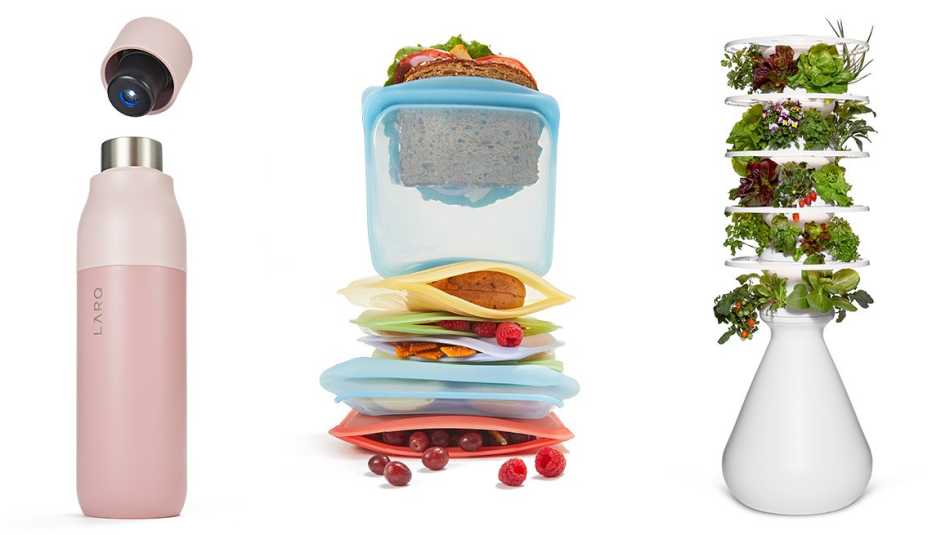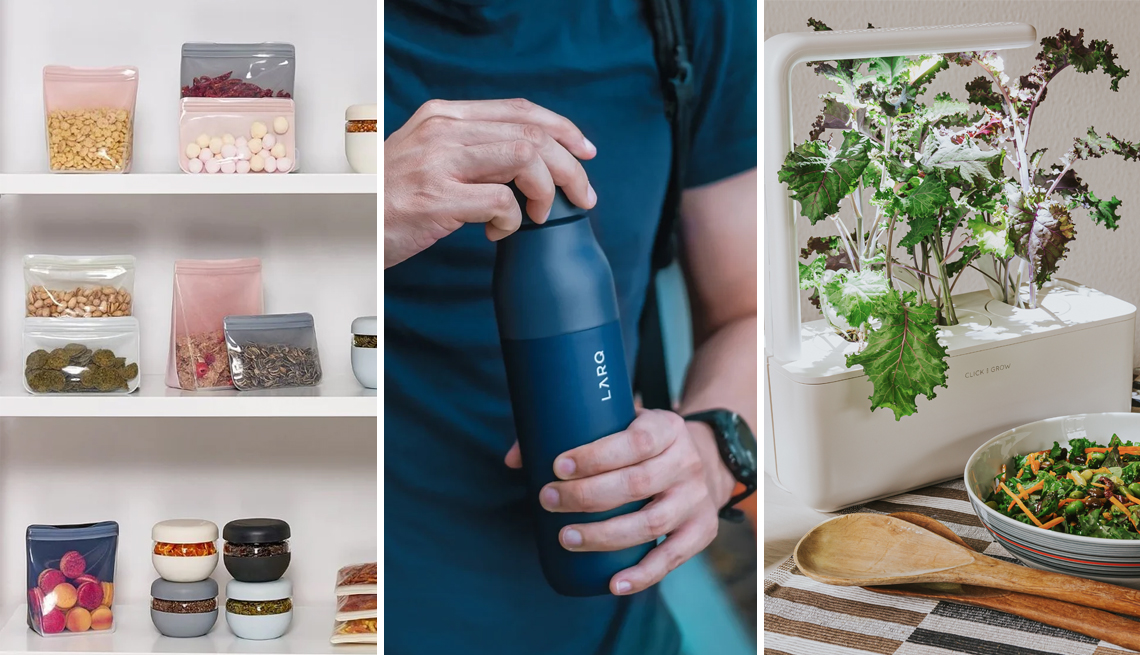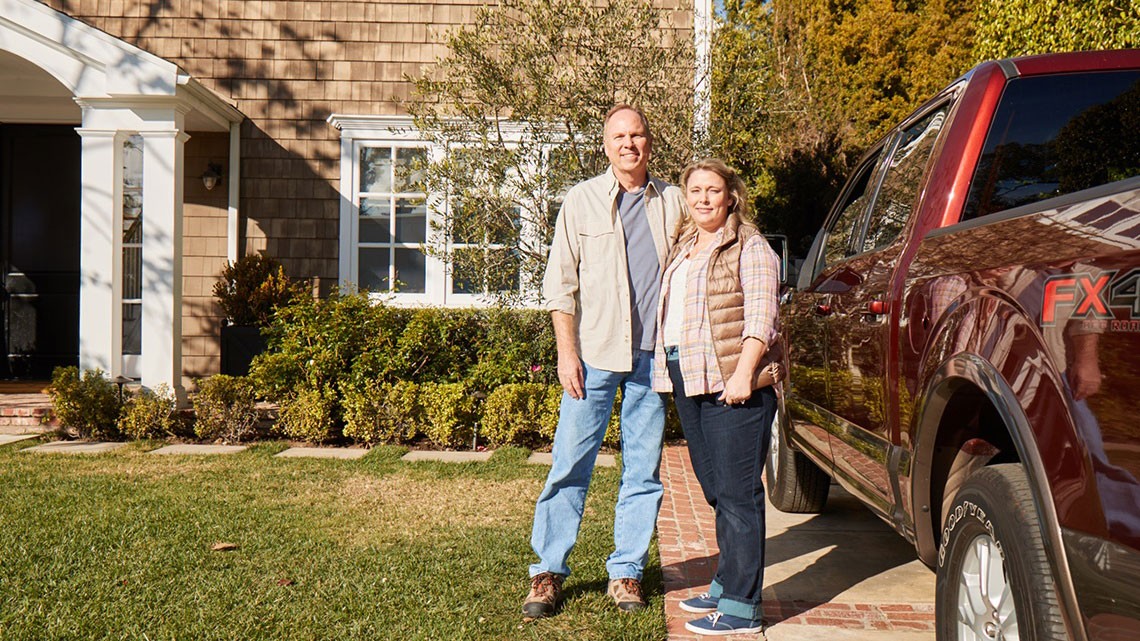Staying Fit
Whatever your opinion on the future of humankind, there’s one hopeful fact you can always rely on: There are inventors coming up with gizmos to make your life easier (and themselves a little richer). We asked three journalists to sample new products that could offer legitimate benefits to a 50-something consumer. They personally tried the products and offer their impressions. (Please note that AARP does not endorse products or companies, so you should consider this a sampler, filled with ideas to get you started.)


1. A cleaner water bottle
There are two concerns about refillable water bottles: how to ensure the water stays free of bacteria, and how to keep the bottle itself from getting musty — those small openings can be a pain to clean.
With a new breed of bottle, you can purify water or disinfect the vessel using a battery-powered UV-C cleaning system in the cap. Two options are the Waatr CrazyCap Pro and the Larq Bottle PureVis (each $99). I used them at the gym, and the water tasted fresh. —Edward C. Baig


AARP Membership— $12 for your first year when you sign up for Automatic Renewal
Get instant access to members-only products and hundreds of discounts, a free second membership, and a subscription to AARP the Magazine.
2. Avoid plastic bags
Disposable plastic bags are costly and bad for the environment. I have tried washing out flimsy sandwich and storage bags for reuse, but it’s never long before I have to trash them. Then a friend introduced me to silicone bags, and I quickly learned to appreciate their durability. Silicone bags can withstand heat and cold, meaning they will hold up in the freezer or the microwave; they can even be used for steaming or sous vide cooking. They’re also dishwasher-safe. Sure, at $13, a single reusable sandwich bag from a company such as Stasher or W&P is pricey, but buying multipacks will lower the individual cost. —Lexi Pandell
3. Gardening without the garden
Don’t have much outdoor space? Indoor gardens and hydroponic towers make growing fresh food and flowers easy. One example is the Click and Grow Smart Garden ($100–$730), which fits on a table or countertop. Depending on the model, you can grow three to 25 plants. With an arc of energy-efficient LED grow lights, there’s no need to place it in a sunny spot. Another option, the Lettuce Grow hydroponic farm stand tower ($400–$700), needs just a couple of feet of space and an electrical outlet. I grew lettuce, zucchini, herbs and more — and all were more plentiful and grew faster than when I tried my hand at soil gardening. Plus, when the water circulates, it sounds like a waterfall. —L.P.







































































